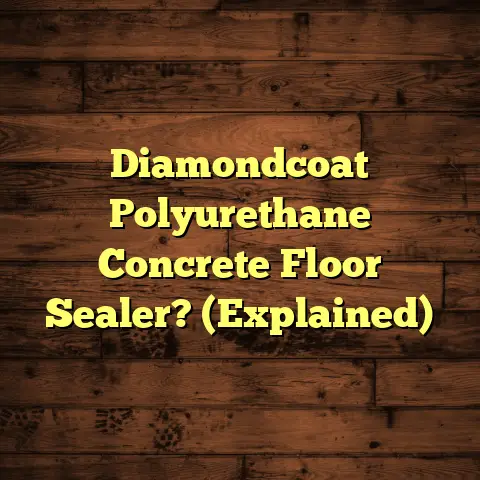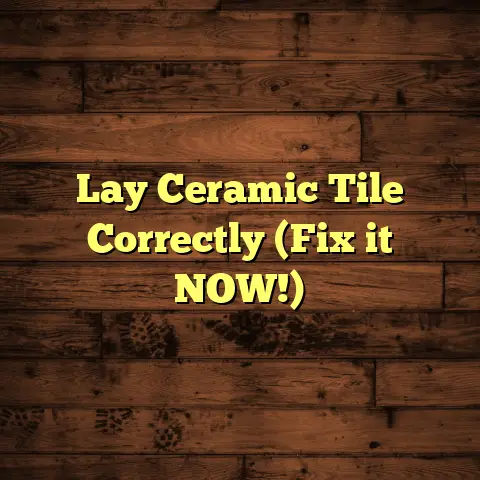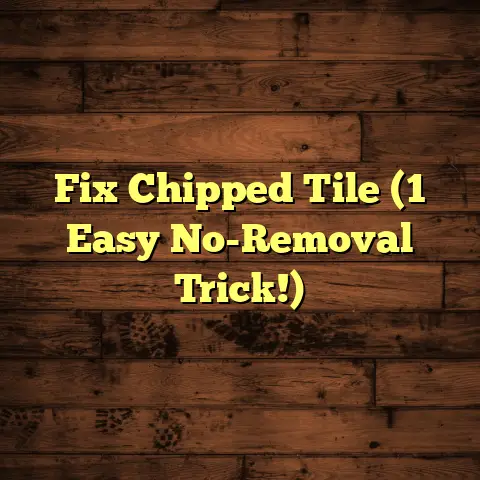Cost to Refinish Hardwood Floors in Bhutan
Refinishing hardwood floors is a common choice for homeowners in Bhutan who want to restore the natural beauty of their flooring while increasing its lifespan. This detailed guide will provide an extensive overview of what to expect when refinishing hardwood floors, including cost factors, detailed breakdowns, comparisons with alternative flooring options, and maintenance tips.
Overview of Cost Factors
Refinishing hardwood floors involves a variety of costs driven by numerous factors. Understanding these elements is vital for homeowners to plan their budgets effectively.
1. Area Size
The total area that requires refinishing is one of the primary factors influencing cost. The larger the area, the more materials and labor are needed. Costs are typically calculated on a per-square-foot basis. Here’s a brief look at how area size impacts expenses:
- Small Rooms (100-200 sq ft): These rooms may incur higher per-square-foot costs due to the minimum charges that contractors often impose.
- Medium Rooms (200-500 sq ft): More favorable pricing per square foot as economies of scale kick in.
- Large Areas (500+ sq ft): While the total cost will be higher, the per-square-foot price tends to decrease as the area increases.
Example Cost Calculation Based on Area Size:
- 100 sq ft: Nu. 15,000 to Nu. 30,000
- 300 sq ft: Nu. 45,000 to Nu. 90,000
- 600 sq ft: Nu. 90,000 to Nu. 180,000
2. Type of Hardwood
The species and quality of hardwood can significantly impact refinishing costs. Some common hardwood types in Bhutan include:
- Teak: Highly sought after for its durability and aesthetic appeal, costing more than other woods.
- Oak: A popular choice that is both sturdy and versatile.
- Maple: Known for its hardness and light color, often used in contemporary settings.
Estimated Costs by Hardwood Type:
- Teak: Nu. 250 to Nu. 350 per sq ft
- Oak: Nu. 200 to Nu. 300 per sq ft
- Maple: Nu. 220 to Nu. 320 per sq ft
3. Labor Costs
Labor is a significant component of refinishing costs, often ranging from Nu. 50 to Nu. 100 per square foot. Factors affecting labor costs include:
- Experience Level: Highly experienced contractors may charge more but often yield better results.
- Job Complexity: Intricate jobs requiring detailed work will likely incur higher labor fees.
4. Additional Considerations
Several additional aspects can affect the total cost of refinishing hardwood floors:
a) Floor Removal
If existing flooring, such as carpet or old hardwood, needs to be removed before refinishing, this will add to the overall expense. Removal costs can range from Nu. 1,500 to Nu. 6,000 depending on the material and area size.
b) Subfloor Replacement
In cases where the subfloor is damaged or not up to standard, replacement may be necessary, adding significant costs (approximately Nu. 50 to Nu. 100 per square foot).
c) Material Grade
The grade of materials chosen for refinishing will also affect costs. Higher-grade finishes and stains will typically cost more but offer better durability and aesthetics.
d) Room Size/Layout
Unusual room shapes or complicated layouts can complicate the refinishing process and increase costs due to additional labor.
e) Installation Type
Different installation methods (such as glue-down vs. nail-down) can have varying costs associated with them.
Summary of Cost Factors
| Factor | Impact on Cost |
|---|---|
| Area Size | Directly proportional to total cost |
| Type of Hardwood | Varies by species and quality |
| Labor Costs | Depends on experience and job complexity |
| Floor Removal | Adds to overall cost |
| Subfloor Replacement | Significant additional cost if necessary |
| Material Grade | Higher grades = higher costs |
| Room Layout | Complicated layouts increase labor charges |
| Installation Type | Different methods have different costs |
Detailed Cost Breakdown
Understanding the nuances of the costs involved in refinishing hardwood floors is essential for effective budgeting.
Average Costs for Refinishing
In Bhutan, the average cost for refinishing hardwood floors ranges from Nu. 150 to Nu. 300 per square foot, depending on various factors discussed earlier.
Cost Breakdown by Project Size
- Small Project (100 sq ft):
- Total Cost: Nu. 15,000 – Nu. 30,000
- This includes sanding, staining, and finishing.
- Medium Project (300 sq ft):
- Total Cost: Nu. 45,000 – Nu. 90,000
- Additional costs may apply if old flooring needs removal.
- Large Project (600 sq ft):
- Total Cost: Nu. 90,000 – Nu. 180,000
- Expect potential discounts on a per-square-foot basis due to size.
Cost by Hardwood Type
The cost of refinishing can vary significantly based on the type of hardwood:
- Teak:
- Refinishing Cost: Nu. 250 to Nu. 350 per sq ft
- Benefits: Highly durable and beautiful finish; however, it is one of the most expensive options.
- Oak:
- Refinishing Cost: Nu. 200 to Nu. 300 per sq ft
- Benefits: A solid choice that balances cost and appearance.
- Maple:
- Refinishing Cost: Nu. 220 to Nu. 320 per sq ft
- Benefits: Harder wood that holds up well but may require specific care during refinishing.
Additional Costs
Floor Removal Costs:
Removing old flooring can add significant costs; plan for anywhere from Nu. 1,500 to Nu. 6,000 based on material and size.
Subfloor Replacement Costs:
If the subfloor needs replacement due to damage or improper installation, budget an additional expense of around Nu. 50 to Nu. 100 per square foot.
Total Cost Summary Example
For a project involving a medium-sized area (approximately 300 sq ft) with oak flooring that requires removal of old carpet:
- Refinishing Oak (300 sq ft):
- Refinishing Cost: 300 sq ft×Nu. 200=Nu. 60,000300 \text{ sq ft} \times \text{Nu. }200 = \text{Nu. }60,000
- Floor Removal:
- Estimated Removal Cost: Nu. 4,500\text{Nu. }4,500
- Total Estimated Cost: Nu. 60,000+Nu. 4,500=Nu. 64,500\text{Nu. }60,000 + \text{Nu. }4,500 = \text{Nu. }64,500
Comparison with Alternative Flooring Options
When considering refinishing hardwood floors, it’s beneficial to compare costs with other popular flooring options available in Bhutan:
Laminate Flooring
- Cost: Laminate flooring typically ranges from Nu. 100 to Nu. 200 per square foot.
- Pros:
- Lower initial investment compared to hardwood.
- Available in various styles that mimic wood.
- Easier installation; often DIY-friendly.
- Cons:
- Less durable than hardwood; cannot be refinished.
- May not add as much value to a home compared to real wood.
Vinyl Flooring
- Cost: Vinyl flooring generally falls between Nu. 80 and Nu. 150 per square foot.
- Pros:
- Water-resistant and easy to clean.
- Available in many design options.
- Comfortable underfoot compared to harder surfaces.
- Cons:
- Lacks the aesthetic appeal of natural wood.
- Can be less durable under heavy traffic compared to hardwood.
Carpet
- Cost: Carpeting can range from Nu. 60 to Nu. 120 per square foot.
- Pros:
- Soft and comfortable underfoot.
- Offers warmth in colder climates.
- Available in many colors and textures.
- Cons:
- Requires more maintenance (cleaning and stain removal).
- Shorter lifespan compared to hardwood; can wear down quickly.
Summary Table for Comparison
| Flooring Type | Cost per Sq Ft | Pros | Cons |
|---|---|---|---|
| Hardwood | Nu. 150 – Nu. 300 | Durable, aesthetic appeal | Higher initial investment |
| Laminate | Nu. 100 – Nu. 200 | Affordable, easy installation | Cannot be refinished |
| Vinyl | Nu. 80 – Nu. 150 | Water-resistant | Lacks aesthetic appeal |
| Carpet | Nu. 60 – Nu. 120 | Comfortable | Requires more maintenance |
Signs that Hardwood Floors Need Replacement
Before deciding whether to refinish or replace your hardwood floors, it is vital to evaluate their condition critically.
Signs Indicating Replacement
- Deep Scratches and Gouges
- If scratches penetrate deep into the wood or multiple areas show heavy wear, replacement may be required instead of refinishing.
- Water Damage
- Severe water damage can lead to structural issues in the wood itself; if the wood feels spongy or has visible warping or buckling, consider replacement.
- Cupping or Warping
- Cupping occurs when there is excessive moisture beneath the floorboards; warped floors indicate a fundamental problem that may necessitate replacement rather than refinishing.
- Severe Discoloration
- If stains have penetrated deeply and cannot be removed through cleaning or sanding, replacement may be more cost-effective.
- Unstable Floors
- If boards feel loose or creak excessively with normal foot traffic, it indicates potential underlying issues that might warrant replacement.
Pros and Cons of Hardwood Flooring
Hardwood flooring offers various advantages and disadvantages that homeowners should consider when making decisions about their flooring options.
Pros of Hardwood Flooring
- Aesthetic Appeal
- Hardwood floors provide a classic look that enhances any room’s decor.
- Available in various finishes and colors that can suit different design styles.
- Durability
- When properly maintained, hardwood can last for decades.
- Resistant to wear and tear compared to softer materials like carpet or laminate.
- Value Addition
- Homes with hardwood flooring typically see higher resale values.
- Buyers often prefer hardwood for its timeless appeal.
- Health Benefits
- Hardwood does not trap dust or allergens like carpet can; it is easier to keep clean.
- Refinishing Potential
- Unlike many flooring types, hardwood can be sanded down and refinished multiple times throughout its life.
Cons of Hardwood Flooring
- Cost
- The initial investment is higher than many other flooring types.
- Refinishing requires time and money over the floor’s lifespan.
- Maintenance Requirements
- Regular cleaning and occasional refinishing are required to keep floors looking their best.
- Susceptible to scratches from furniture and pet claws if not protected adequately.
- Moisture Sensitivity
- Not ideal for areas prone to high humidity or moisture exposure (e.g., bathrooms).
- Noise
- Hardwood can amplify sound; adding rugs may help mitigate this issue.
- Installation Complexity
- Professional installation is often recommended; DIY may require advanced skills.
Professional Installation vs DIY
Choosing between professional installation and DIY for refinishing hardwood floors is an important decision that can affect both costs and outcomes.
Cost Differences
- Professional Installation
- Typically adds between Nu. 50 and Nu. 100 per square foot for labor.
- Professionals provide expertise that ensures a high-quality finish with less risk of mistakes.
- DIY Installation
- Can save significant labor costs but requires investment in tools.
- Homeowners must have some level of experience with woodworking or home improvement projects.
Tools Needed for DIY Refinishing
If opting for DIY refinishing, ensure you have access to the following tools:
- Sanding Machine: For leveling the surface and removing old finish.
- Edger: To sand areas near walls or corners that larger machines cannot reach.
- Vacuum Cleaner: Essential for cleaning up dust between sanding and finishing stages.
- Stain Applicators: Brushes or rags for applying stain evenly.
- Finish Applicators: Tools such as rollers or applicator pads for applying sealers or finishes smoothly.
- Safety Gear: Dust masks and goggles are crucial for protection during sanding processes.
Skills Required for DIY
While some homeowners may feel confident tackling a DIY project, certain skills are essential:
- Basic woodworking knowledge will help you understand how to handle tools safely.
- Familiarity with home improvement practices ensures better outcomes during installation.
- Attention to detail is critical in achieving an even finish without streaks or bubbles.
- Patience is vital as achieving a quality result takes time through each step of the process.
Questions to Ask Hardwood Flooring Contractors
When interviewing potential contractors for your hardwood floor refinishing project, consider asking the following questions:
- What is your experience with hardwood floor refinishing?
- Can you provide references from previous clients?
- What is included in your quote? (labor, materials, cleanup)
- How do you handle unexpected issues during the project?
- What type of finish do you recommend based on my flooring type?
- Will you provide a written contract outlining all costs involved?
- What measures do you take to protect furniture and surrounding areas during the project?
- How long do you expect the project will take?
- What type of warranty do you offer on your work?
- Are you licensed and insured?
Care and Maintenance Tips for Hardwood Floors
To maximize the longevity of your hardwood floors after refinishing:
- Regular Cleaning:
- Sweep or vacuum regularly to remove dirt and debris that can scratch surfaces.
- Damp Mopping:
- Use a damp mop with a cleaner designed specifically for wood floors; avoid excess water.
- Mats at Entryways:
- Place mats at entry points to reduce dirt tracked onto floors; this minimizes scratches over time.
- Avoid Excessive Water Exposure:
- Wipe up spills immediately; prolonged moisture exposure can cause damage.
- Refinish Periodically:
- Plan for refinishing every 5–10 years depending on wear; this helps maintain appearance and durability.
- Use Furniture Pads:
- Protect floors from scratches by placing pads under furniture legs; this helps prevent gouging when moving items around.
- Control Humidity Levels:
- Maintain consistent humidity levels in your home; excessive dryness can cause wood shrinkage while too much humidity can lead to warping.
- Avoid High Heels & Pet Claws:
- Be mindful of footwear that could scratch surfaces; consider nail trimming for pets as well.
Conclusion
Refinishing hardwood floors in Bhutan represents an investment in both beauty and longevity for your home’s interior spaces. By understanding the associated costs—such as area size, wood type, labor expenses—and considering alternatives like laminate or vinyl flooring, homeowners can make informed decisions about their flooring projects.
This comprehensive guide provides insights into signs your hardwood floors may need replacement versus refinishing, while also highlighting the pros and cons associated with hardwood flooring itself.
Whether you choose professional installation or opt for a DIY approach, ensuring proper care and maintenance after refinishing will maximize your investment’s lifespan while keeping your floors looking beautiful for years to come.





